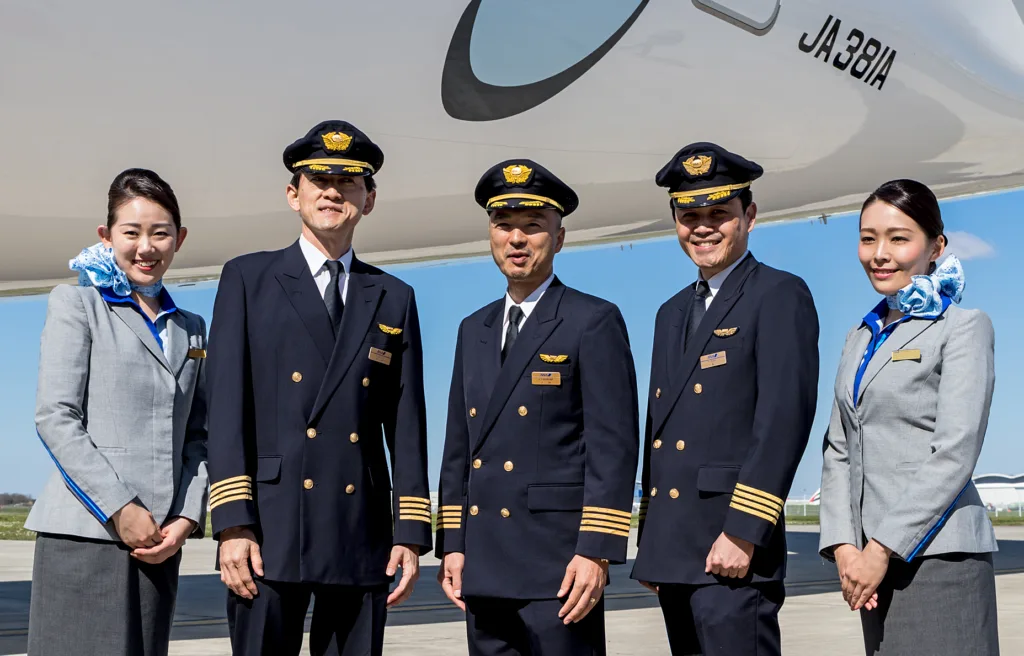All Nippon Airways (ANA), better known globally as ANA, is Japan’s largest airline and a proud member of the Star Alliance. Founded in 1952, the Tokyo-based carrier operates an extensive domestic and international network, connecting Japan’s major cities to nearly every continent. With its impressive safety record, exceptional cabin service, and world-class reputation, ANA continues to hold a special place in both passengers’ and aviation professionals’ hearts.
Behind this stellar brand, however, lies a team of highly trained pilots — the people who operate some of the most advanced aircraft in the world. For those aspiring to join ANA’s cockpit or simply curious about how much its pilots make, here’s a closer, more realistic look at ANA pilot salaries in 2025, alongside benefits, requirements, and their recruitment process.
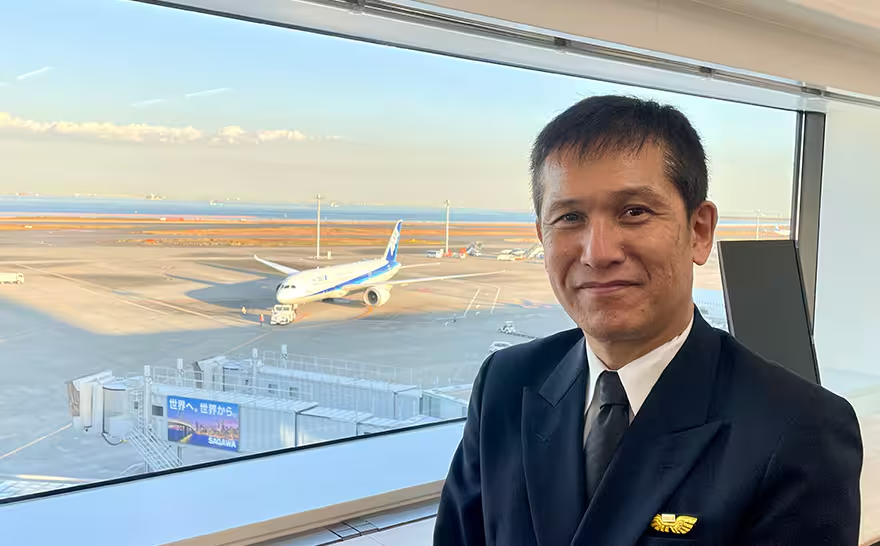
ANA First Officer Salary
ANA First Officers typically earn between ¥1.1 million and ¥2.3 million per month (approximately US$7,200–$15,000). This range depends on total flying hours, aircraft operated, and years spent with the airline. For those starting fresh, often after being internally trained or hired from smaller regional carriers, the monthly salary begins around ¥1.1 million, with gradual increases over the first five years.
Experienced First Officers, especially those operating wide-body aircraft like the Boeing 787 or 777, can earn closer to ¥2.3 million per month. Including allowances, bonuses, and per diems, the annual income can reach around ¥20 million to ¥27 million, equivalent to US$130,000–$180,000.
ANA First Officers generally fly 75 to 85 hours per month and maintain roughly 18 working days per month, leaving enough rest days as mandated under Japanese labour regulations.

ANA Captain Salary
Captains at ANA earn substantially higher salaries reflecting both seniority and responsibility. A typical Captain earns between ¥2.2 million and ¥3.3 million monthly (roughly US$14,500–$22,000). Those flying long-haul aircraft such as the Boeing 777-300ER or the Airbus A380 on intercontinental routes often receive additional pay based on flight length and international duties.
With allowances and other benefits included, the annual total for an ANA Captain sits between ¥32 million and ¥40 million, or roughly US$210,000–$270,000. Captains nearing retirement or in supervisory flight instructor roles can even earn slightly higher figures due to tenure-based increments.
Both First Officers and Captains also receive completion bonuses at the end of certain multi-year contracts, commonly amounting to ¥3–4 million, adding to overall annual income. The monetary benefits, combined with job stability and respect within Japan’s aviation sector, make ANA an attractive employer for domestic and international flight crew alike.
Benefits for ANA Pilots
ANA is one of Japan’s most stable and employee-focused airlines, offering a suite of generous benefits designed to attract and retain world-class pilots. Here are some of the main perks ANA pilots receive:
- Paid Leave and Rest Days:
ANA pilots typically receive around 10–12 days off each month, in addition to paid annual leave averaging 24–30 days per year. Senior pilots enjoy more flexible rosters, often choosing their preferred rest periods. - Housing and Commuting Support:
Pilots based in Tokyo or Osaka can opt for subsidised housing or a monthly accommodation allowance worth approximately ¥150,000–¥200,000. Those who commute domestically are provided transport passes and even hotel stays when required for early morning departures or late-night returns. - Medical and Insurance Coverage:
ANA provides comprehensive medical, dental, and accident insurance not only for the pilot but also for their dependents. Coverage extends globally, an important perk for international operations. - Retirement and Pension Contributions:
ANA pilots are enrolled in a company pension scheme that grows with years of service. Senior Captains benefit from sizeable end-of-career payouts that can exceed ¥10 million, depending on their final basic salary and tenure. - Bonuses and Incentives:
Annual performance bonuses are distributed twice a year, based on both individual and company results. These typically range between 1.5–3 months’ base salary, depending on profitability and flight safety records. - Travel Benefits:
ANA pilots and their families enjoy free or discounted travel on ANA and its Star Alliance partners, including United Airlines, Lufthansa, and Singapore Airlines. Business and first-class upgrades are sometimes available on standby. - Education and Training:
Pilots with children receive partial support for private or international school tuition, particularly for those posted overseas. Additionally, ANA invests heavily in ongoing simulator training and leadership programmes, ensuring pilots stay at the forefront of modern aviation.
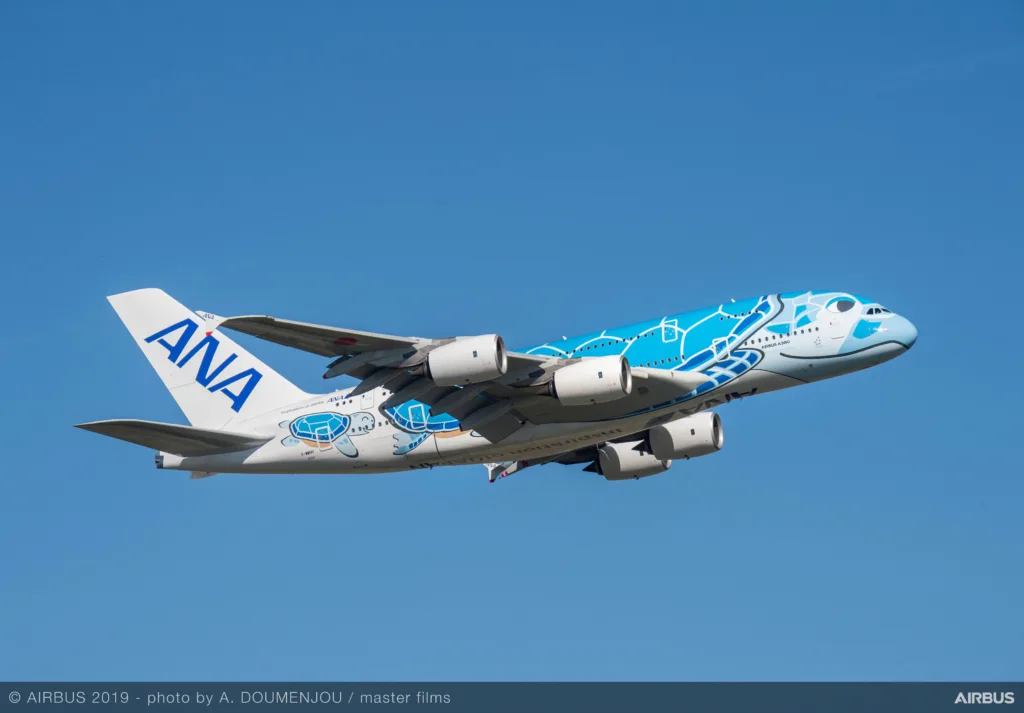
Requirements to Become an ANA Pilot
To qualify for a position at ANA, pilots must meet strict operational and regulatory standards set by both the Japanese Civil Aviation Bureau (JCAB) and the airline’s internal requirements.
Minimum qualifications include:
- A valid ATPL (Airline Transport Pilot Licence) accepted by JCAB
- Class 1 medical certificate issued under JCAB regulations
- Level 4 or higher ICAO English proficiency
- Type rating for the aircraft intended to operate (Boeing 737/787 or Airbus A320/380 preferred)
- Minimum 1,500–3,000 total flight hours depending on position
- No record of safety or disciplinary incidents
ANA also places a strong emphasis on cultural fit and professional conduct, given Japan’s deeply collaborative work culture. Pilots are expected to show high discipline, teamwork, and adaptability to operational structure, qualities seen as integral to Japanese aviation ethos.
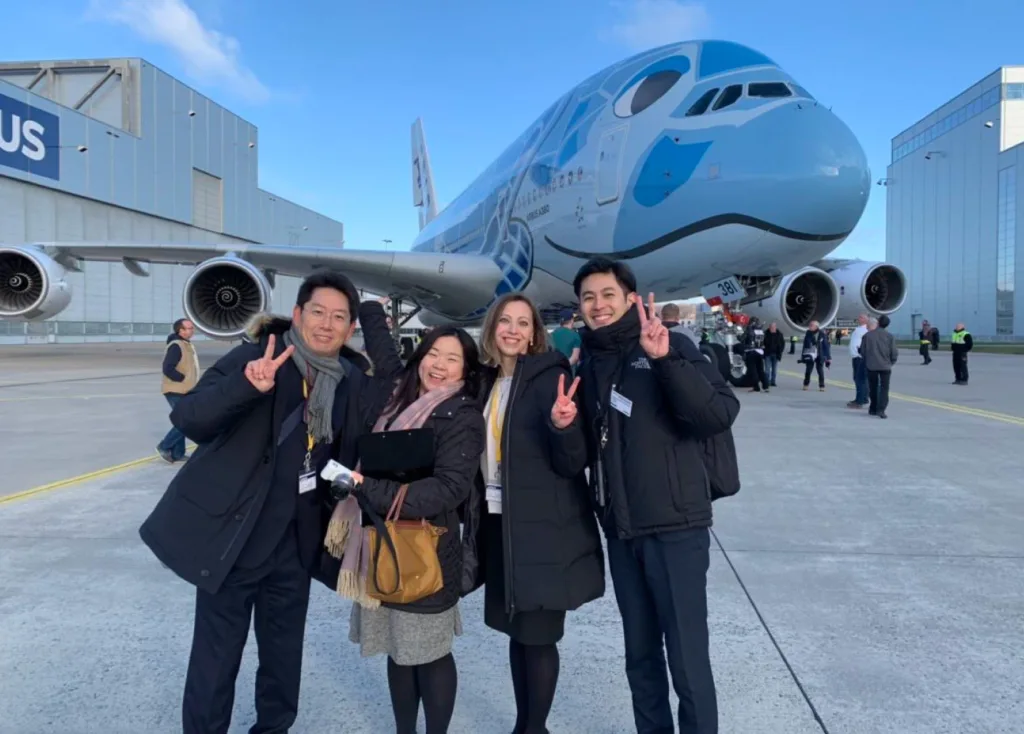
ANA Pilot Hiring Process
The ANA pilot recruitment process is rigorous yet highly organised. It’s designed to evaluate both flying competency and cultural alignment with ANA’s long-standing values of precision, safety, and respect.
- Online Application:
Applicants begin by submitting their profiles and flight records on the ANA Careers Portal. They need to upload licences, logbooks, and proof of type rating. - Document Screening:
HR and training teams verify documents and shortlist candidates based on flight experience, aircraft type, and eligibility for JCAB validation. - Technical Interview:
Shortlisted pilots attend a technical interview, either virtually or in Tokyo. This includes discussions on aircraft systems, navigation procedures, weather interpretation, and operational decision-making. - Simulator Assessment:
Candidates receive invite to undergo a simulator evaluation at ANA’s training centre in Haneda. This test assesses handling precision, CRM (Crew Resource Management), and emergency response. - Psychometric and Personality Tests:
ANA includes a unique phase where candidates undergo aptitude and psychological testing. This focuses on stress response, teamwork, and situational awareness. - Final HR Interview:
The final interview focuses on cultural fit, communication skills, and motivation to join ANA. Senior pilots and HR leaders often do this interview. - Medical and Background Check:
Successful applicants need to pass a comprehensive JCAB Class 1 medical and background verification before receiving an official offer.
The entire process can take between 6 to 10 weeks, depending on applicant location and administrative procedures. Successful candidates then undergo induction and line training before being cleared for commercial service.
Bottom Line
All Nippon Airways provides strong long-term prospects for pilots. Its structured seniority system ensures predictable promotions, with First Officers typically eligible for Captaincy after around 6–8 years. This also depends on operational needs and performance.
ANA also supports transitions into non-flying roles, such as training captains, fleet instructors, or flight operations management. With its growing fleet of Boeing 787s and A321neos and plans to expand into new international routes, the airline offers increasing opportunities for upward mobility and exposure to global operations.
For foreign pilots, ANA continues to open limited expatriate contracts, especially for type-rated wide-body professionals. These positions come with added relocation support and slightly higher allowances.
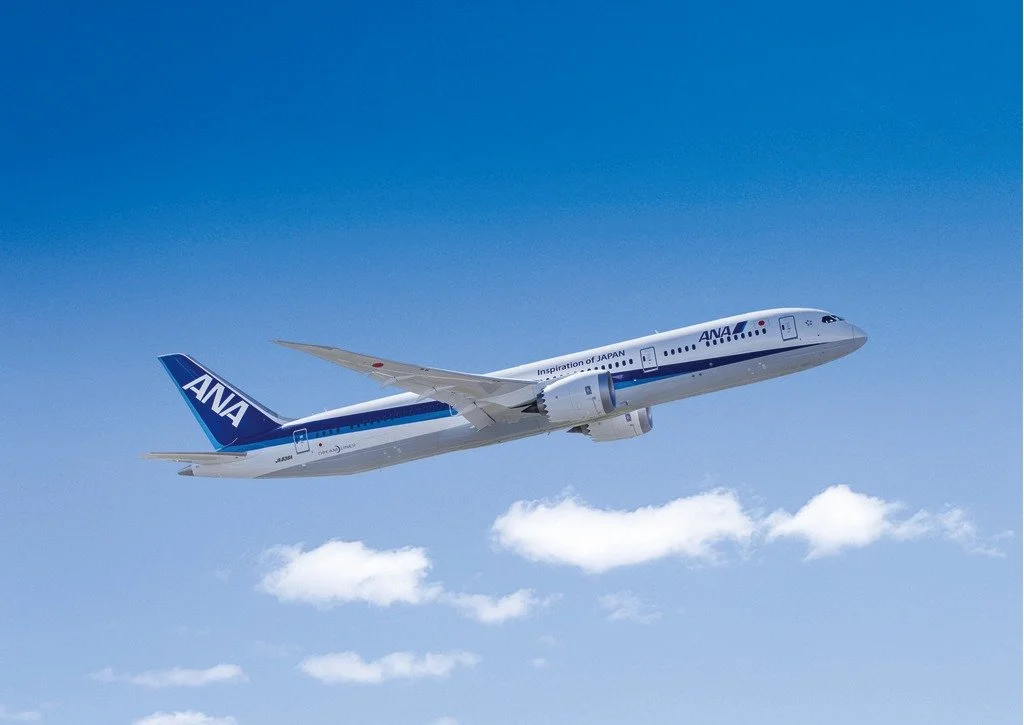
ANA Pilot Salary FAQs
ANA pilots earn between ¥1.1 million and ¥3.3 million per month, depending on seniority and aircraft type. Captains flying wide-body jets earn the highest, with total annual pay exceeding ¥40 million when bonuses and allowances are included.
Most pilots are based in Tokyo, primarily at Haneda International Airport or Narita International Airport. Some domestic pilots operate out of Osaka (Itami and Kansai).
Yes, ANA continues its recruitment for both local and expatriate pilots as it restores full international schedules. Candidates can apply directly via the airline’s website.
Please join our Telegram Channel for the latest aviation updates.

